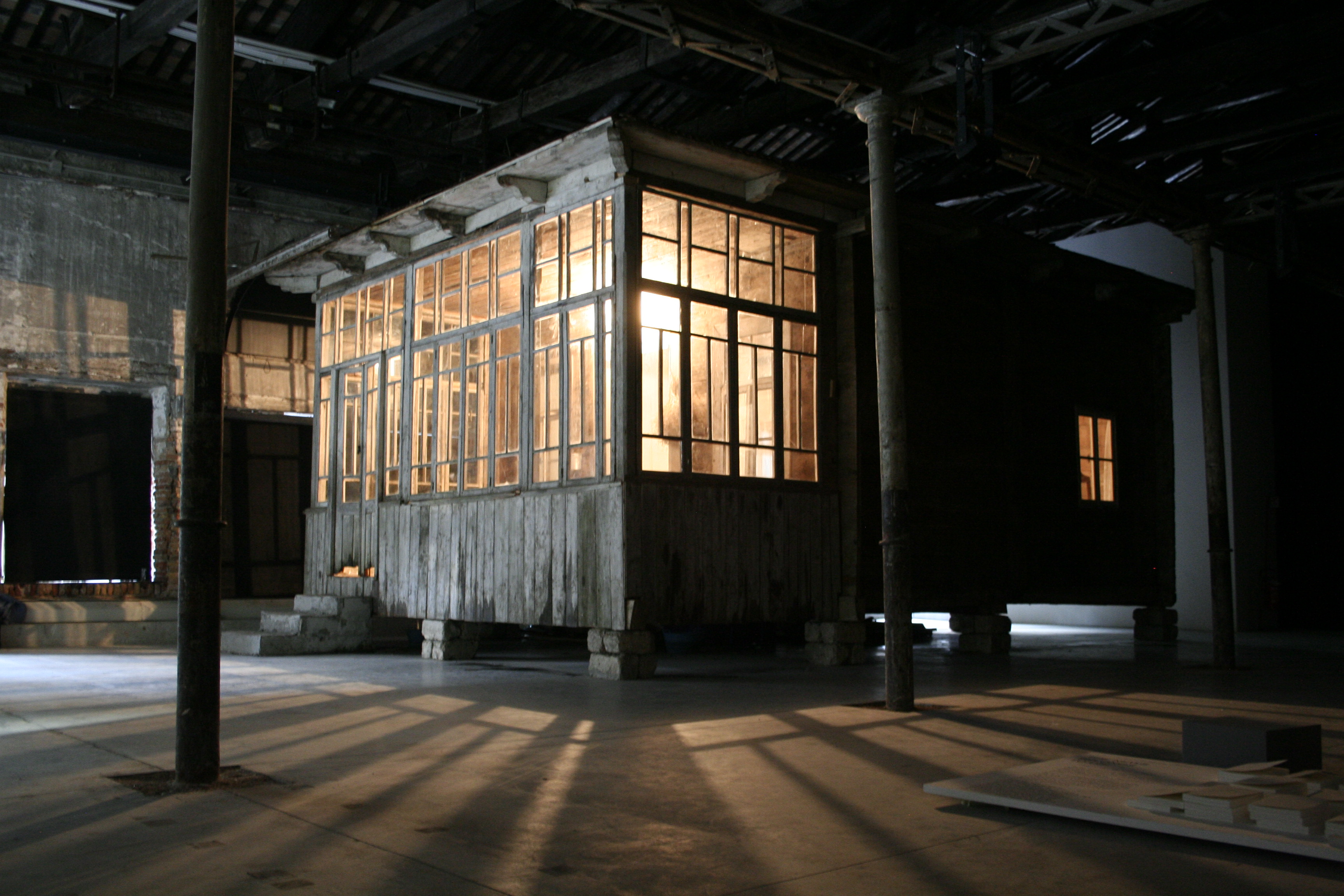
Vajiko Chachkhiani, Pavilion of Georgia, 57th Venice Biennale install. Photo: Maria Nitulescu. Courtesy: The Pavilion of Georgia / Vajiko Chachkhiani
The 57th Venice Biennale, entitled Viva Arte Viva and curated by Christine Macel, opened to the public on 13 May. Marcel has called it an exhibition “designed with artists, and for artists”. In a world shaken by terrorism, economic crisis and right-wing populism she believes strongly in art for art’s sake. A single theme was thought to be too limiting so she worked closely with artists putting their practices centre stage. Viva Arte Viva is divided into nine “Trans-pavilions” including the Pavilion of Earth and the Pavillion of Shamans.
My first full day was spent in the Giardini trying to make sense of so much creativity. In the Central Pavilion and Pavilion of Artists and Books, Macel seems to be saying that in this frenetic contemporary world we need time to think. There are wall-mounted book assemblages by John Latham and beautiful, quiet book-works by Liu Ye, as well as 30 years of small notebooks by Abdullah Al Saadi packed into sardine cans and cigarette packets.
In the British Pavilion, Phyllida Barlow has produced a massive, complex installation. There’s an apocalyptic feel to this monumental work that evokes something of Joseph Beuys’s The End of the 20th Century. A sense of things collapsing and falling apart. When I caught up with her she said she’d been working on it throughout the Brexit debate, which had deeply depressed her. From there it is a quick hop to the German Pavilion where Anne Imhof brings together in a spare, brutal space, a choreographed performance that confronts the “rapid and fundamental political, social, economic pharmaceutical and technological changes that we are currently facing” with her brand of “hard” realism. While in the US Pavilion, Mark Bradford’s pertinent contribution feeds on his understanding of the crisis in US social and political life. In April he opened a shop in the Frari district of Venice where prisoners make and sell products alongside a local co-operative that has coloured his abstract and collage-based works.
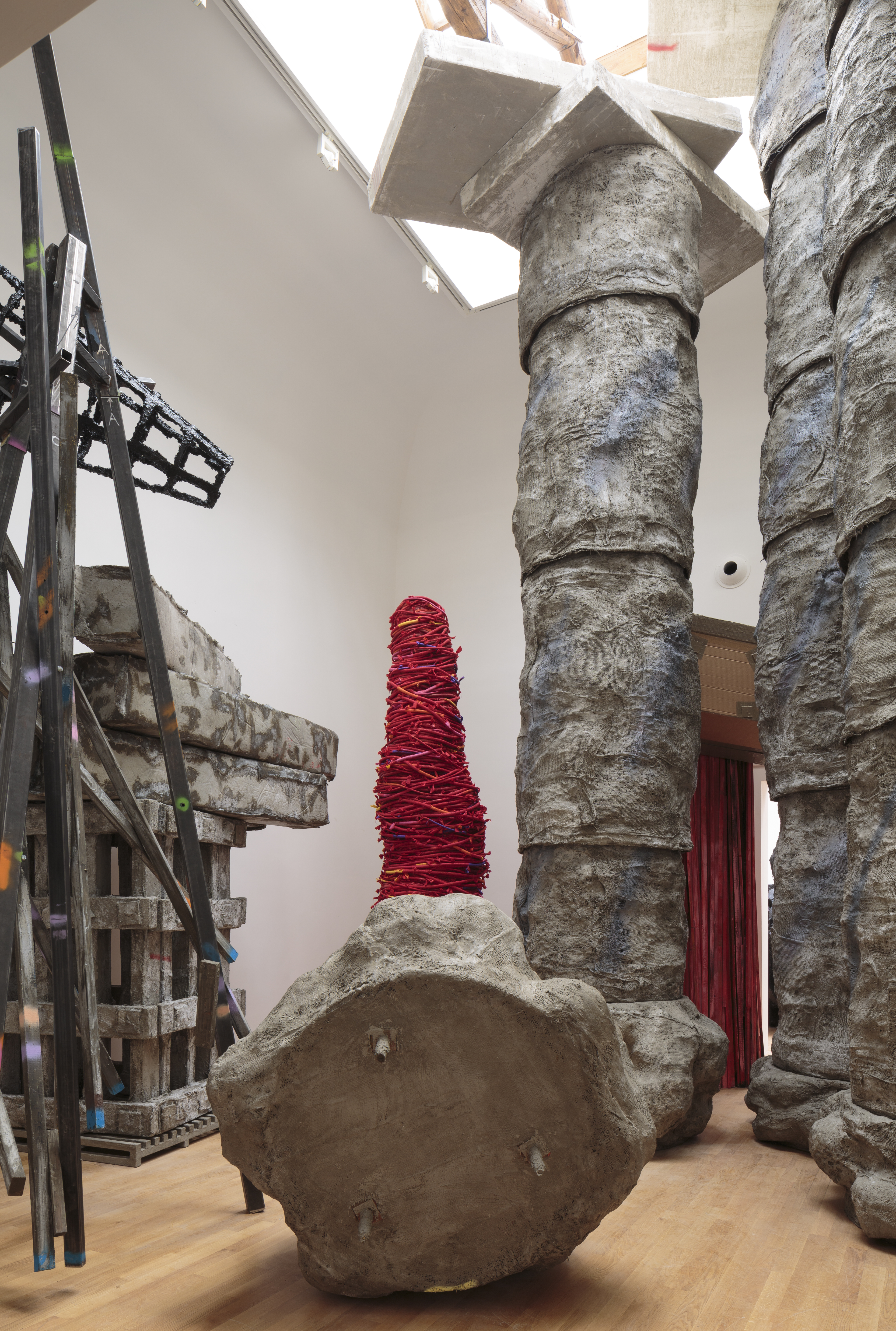

Questions about displacement, “them and us”, colonialization and the refugee crisis abound. In the Australian Pavilion, Tracey Moffatt’s work exists somewhere between fiction and history. Using photography, video and film Moffatt constructs theatrical scenarios and has created two new photographic series—Body Remembers and Passage—and two videos—Vigil and The White Ghosts Sailed In under the collective title Horizon. Evocative and poetic they deal with loss, longing and a desire for a sense of home.
The Romanian Pavilion has produced a strong show of both old and new work by the 91-year-old Geta Brătescu—much of it unseen outside her native Romania. Full of colour and invention this is a wide-ranging survey of her multimedia work that deals with issues such as memory and femininity. In complete contrast, Xavier Veilhan, assisted by the Swiss-American artist Christian Marclay, is hosting in the French Pavilion around 70 invited musicians who perform in a plywood studio, inspired by Kurt Schwitters’s lost Merzbau. With no delineation between performer and visitor, there’s a continuing sense of risk about the ongoing process of creativity. The Russian Pavilion presents Theatrum Orbis featuring artist Grisha Bruskin, Recycle Group and Sasha Pirogova, alongside contemporary Russian composers, in a powerful interlinked theatrical installation that includes sculpture and video.
“Of the numerous pavilions, it was the Pavilion of the Shamans that stood out. Following on from the legacy of Joseph Beuys, it presents the idea of the artist as visionary.”
Though the Swiss Pavilion was built by Alberto Giacometti’s brother, Bruno, Switzerland’s most famous artist flatly refused to show his work at the biennale. His absence is felt in the mesmeric The Women of Venice by the Swiss-American duo Teresa Hubbard/Alexander Birchler. An evocative, double-sided film/video installation, Flora is based on their discoveries about the tragic life of the largely forgotten American artist who, for a time, was Giacometti’s lover and muse. Presented through the voice of her 81-year-old son this potent, painful work asks multiple questions about the male artist and female muse, about talent, sacrifice, personal relationships and art.
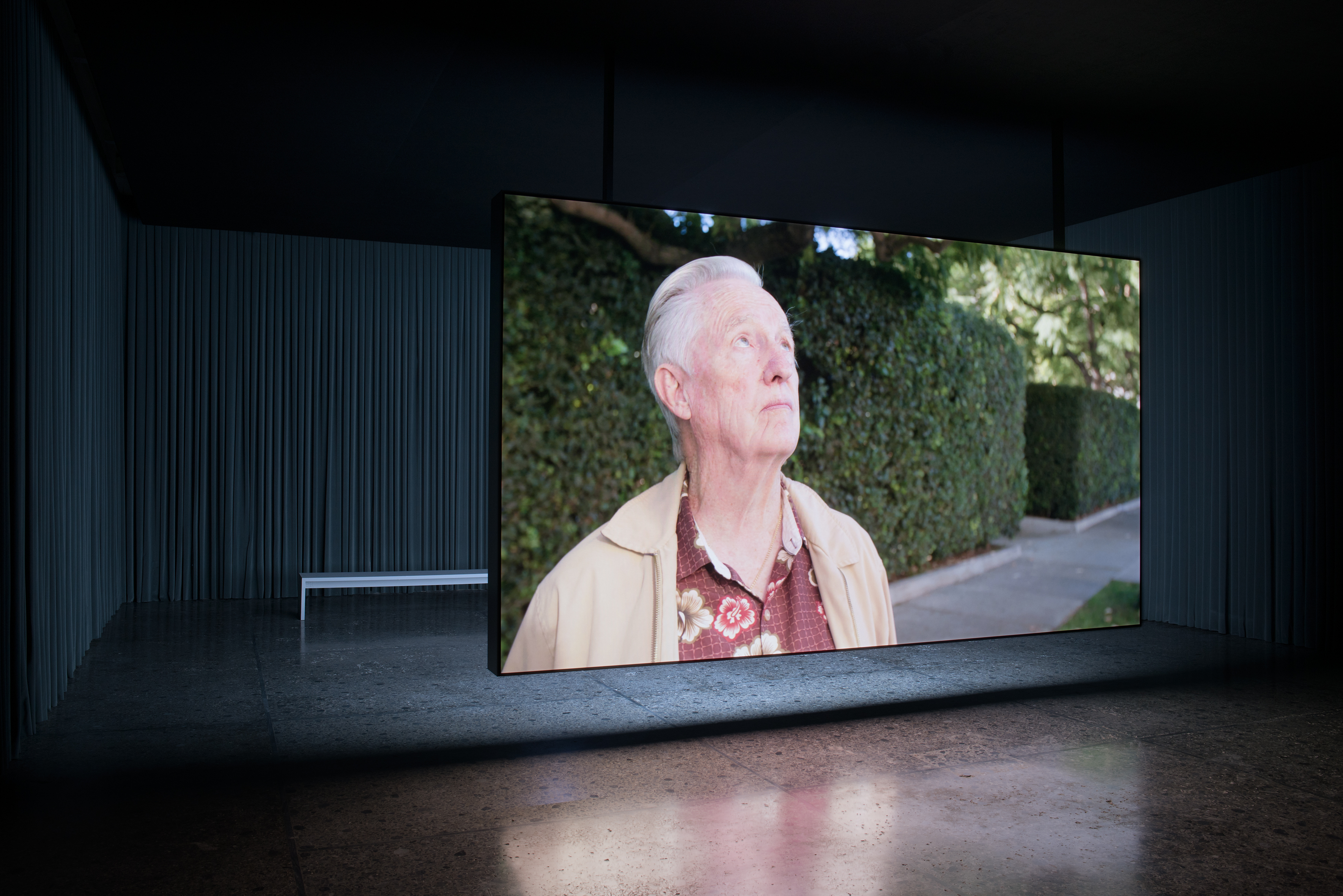
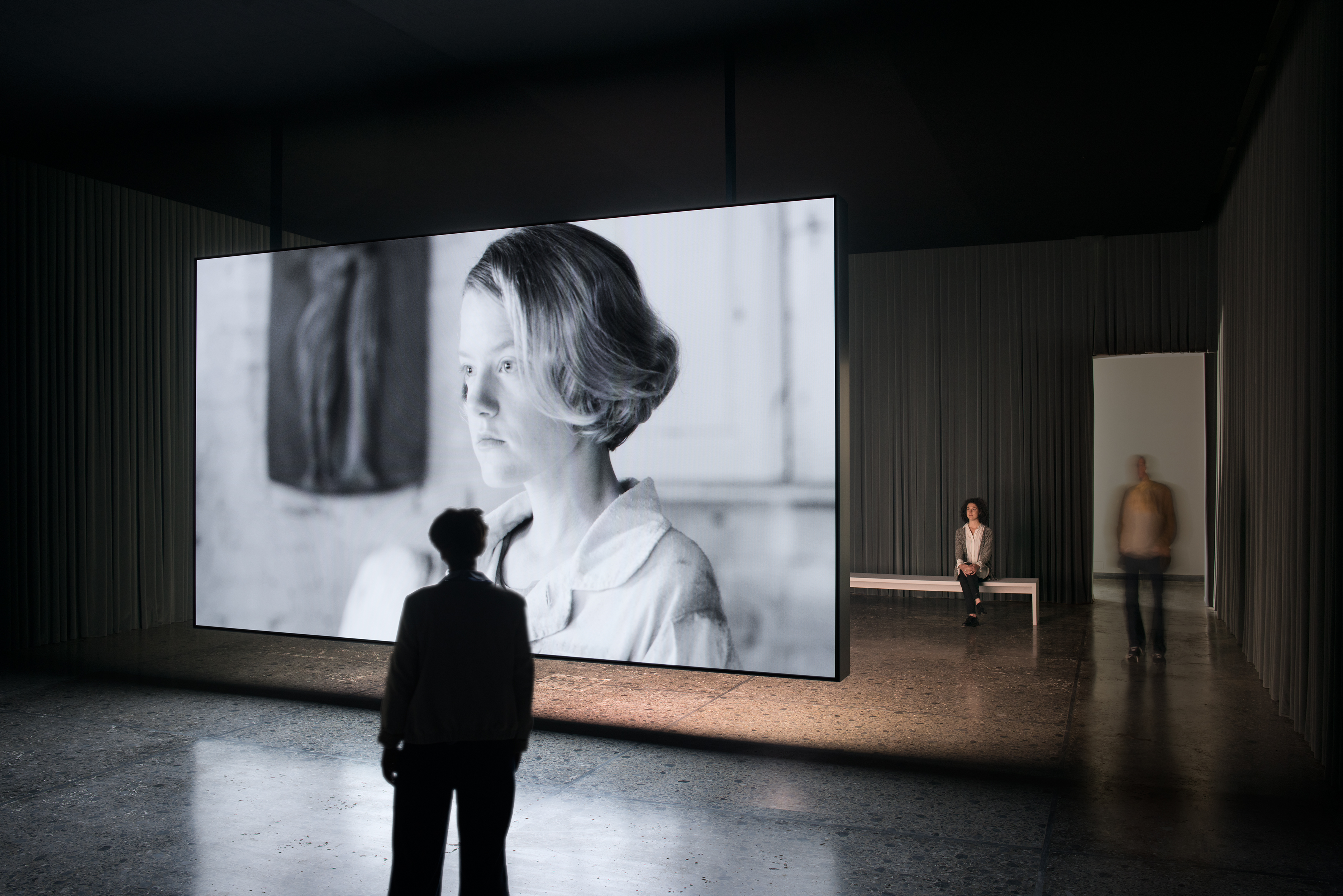
Teresa Hubbard / Alexander Birchler, Flora 2017, Synchronized double-sided film installation with sound, 30 mins, loop, Installation view: Swiss Pavilion, Venice Biennale 2017, Courtesy the artists, Tanya Bonakdar Gallery, New York and Lora Reynolds Gallery, Austin, Photo credit: Ugo Carmeni
Over at the labyrinthine Arsenale, you have to have stamina not to be overwhelmed by the amount of art on offer. Of the numerous pavilions, it was the Pavilion of the Shamans that stood out. Following on from the legacy of Joseph Beuys, it presents the idea of the artist as visionary. The Brazilian artist, Ernesto Neto, journeyed to meet the Huni Kuin people in the Amazon jungle and has created work around their rituals. As I lay with an aching back in their shamanic tent, two native Brazilian women sat beside me doing traditional face painting, while small children drummed and played the maracas.
One of the most potent works in the Arsenale is by the Chilean artist Enrique Ramírez, Un Hombre que Camina—a symphony of sea and open sky filmed in the salt pans of the sacred landscape of Chile. Dressed in a shamanic mask a man pulls behind him, through briny ankle-deep water, a raft of floating suits towards the distant sun, followed by a traditional South American brass band. Mesmeric and powerful this work illustrates how ritual and art can both give meaning to life and death.
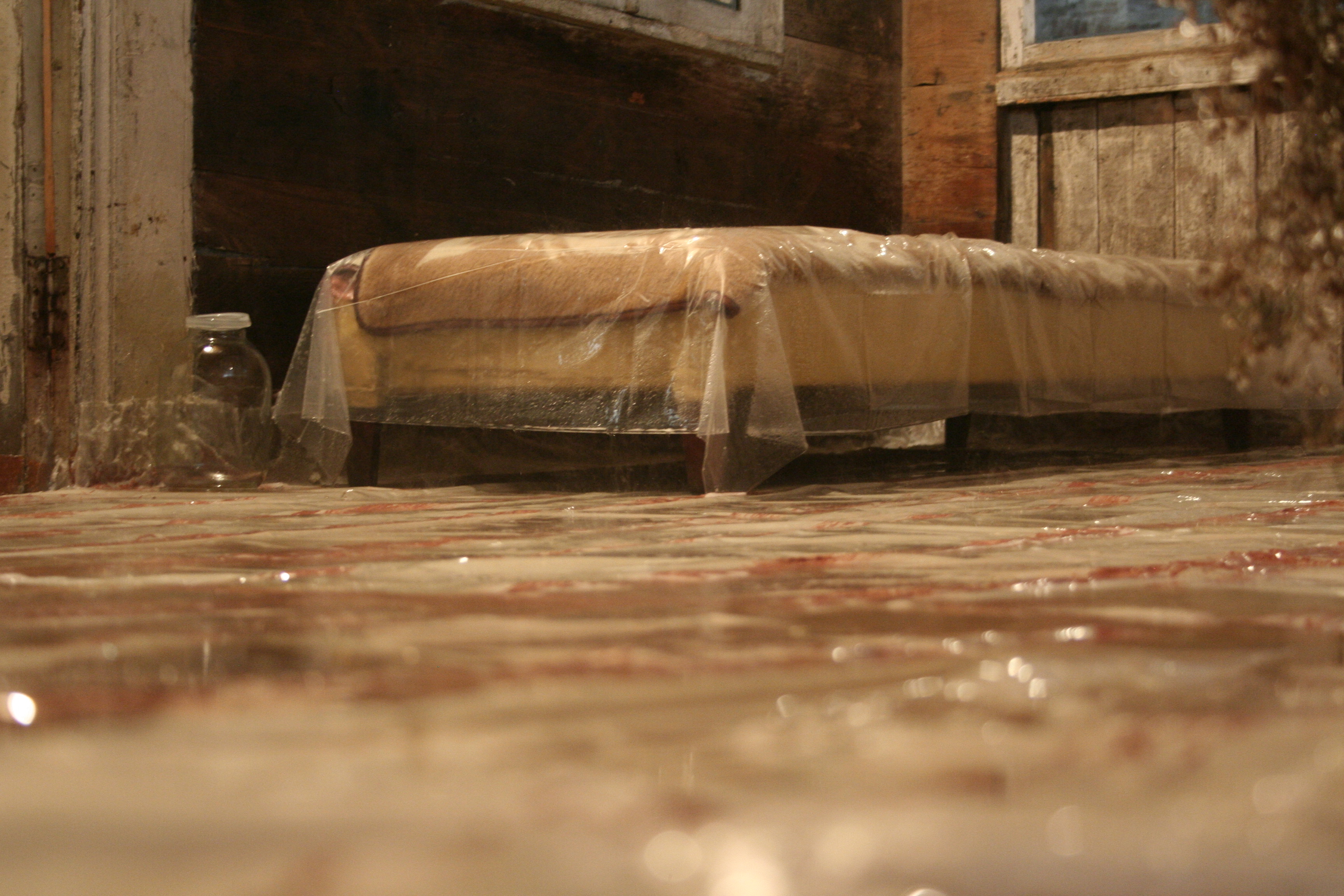
Another poetically charged work in the Arsenale is the Georgian contribution Living Dog Among the Dead Lions by Chachkhiani. In an abandoned house purchased from the mining town of Chiatura, water pours continually through the roof soaking the rotting floorboards and faded blue paint of the porch. In this modest interior, which shows signs of having been recently abandoned, the continual sound of the rain dripping onto the floor, the bed and into a tin bowl suggests lives attacked from the outside by social historical circumstances and is a potent metaphor for death.
Ireland at Venice is presenting a powerful work grounded in history and myth by Jesse Jones. Entitled Tremble Tremble it’s inspired by the 1970s Italian wages for housework movement, during which women chanted “Tremate, tremeate, le streghe sono tornate!” (Tremble, tremble, the witches have returned!) Jones’s atavistic work emerges from the rising social movement in Ireland that calls for a transformation of the historic relationship between church and state.
“In an abandoned house purchased from the mining town of Chiatura, water pours continually through the roof soaking the rotting floorboards and faded blue paint of the porch.”
Supported by the Arts Council of Britain and opened by Sir Nicholas Serota, the Diaspora Pavilion, outside the main event at the Palazzo Pisani at Santa Marina, showcases the work of eleven emerging UK-based artists from racially and culturally diverse backgrounds, along with ten leading artists from similar backgrounds who have acted as their mentors. Artists, among others, include Sokari Douglas Camp and Isaac Julien, whose video installation is set in the landscape of Visconti’s masterpiece, The Leopard, juxtaposed with images of the deadly journeys made by migrants. There’s also a superb piece by Yinka Shonibare, The British Library, made of books covered in his hallmark Dutch wax-printed cotton batik that display the names of immigrants who have made a significant contribution to British life.
Also outside the main event at Il Capricorno, San Marco 1994 30124 is Victoria Miro’s Poolside Magic where Chris Ofili is showing a suite of watercolours in which a man in tails serves a naked woman beside a swimming pool. These dream-like images that might have been spawned by a meeting between Francesco Clemente and William Blake touch on sexuality, mutability and the occult.
Staying with narrative themes I moved to the collateral event curated by Emma Hill of the Eagle Gallery, London at Ca’ Dandolo Grand Canal, where Stephen Chambers, RA is showing his The Court of Redonda. Chambers has produced a series of fantasy portraits hung on the walls of a beautiful private palazzo that depict a cast of 101 characters from a legendary tale based on the fate of the tiny uninhabited West Indian island of Redonda. In 1865 the rock was claimed by a merchant-trader Matthew Dowdy Shiell, who elected himself monarch. Perfect for this dreamy mercantile city Chambers has woven a wonderful “collision between fact and fiction” worthy of Italo Calvino
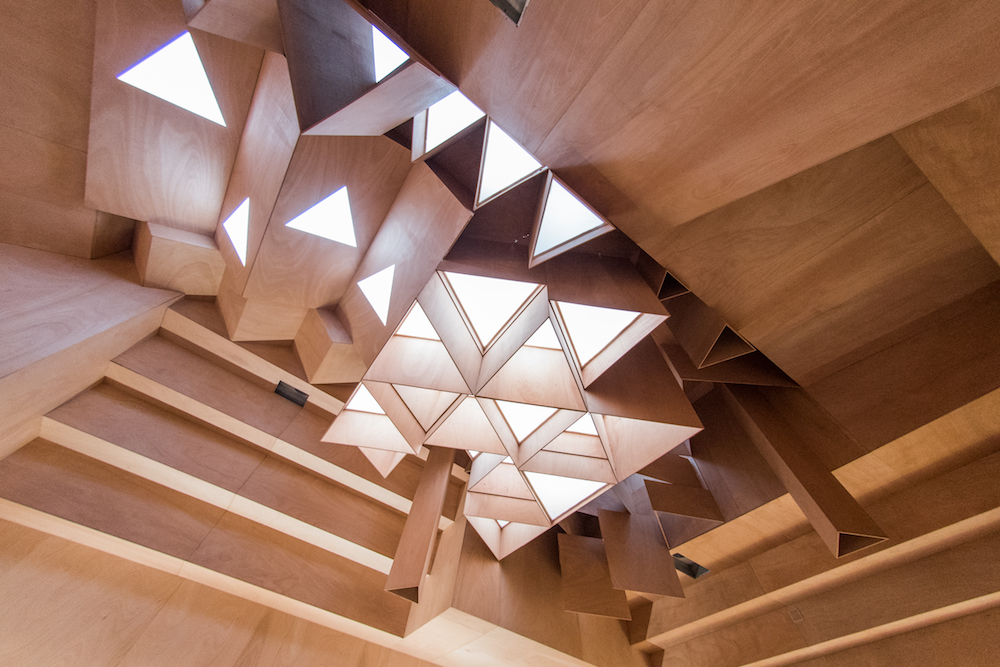
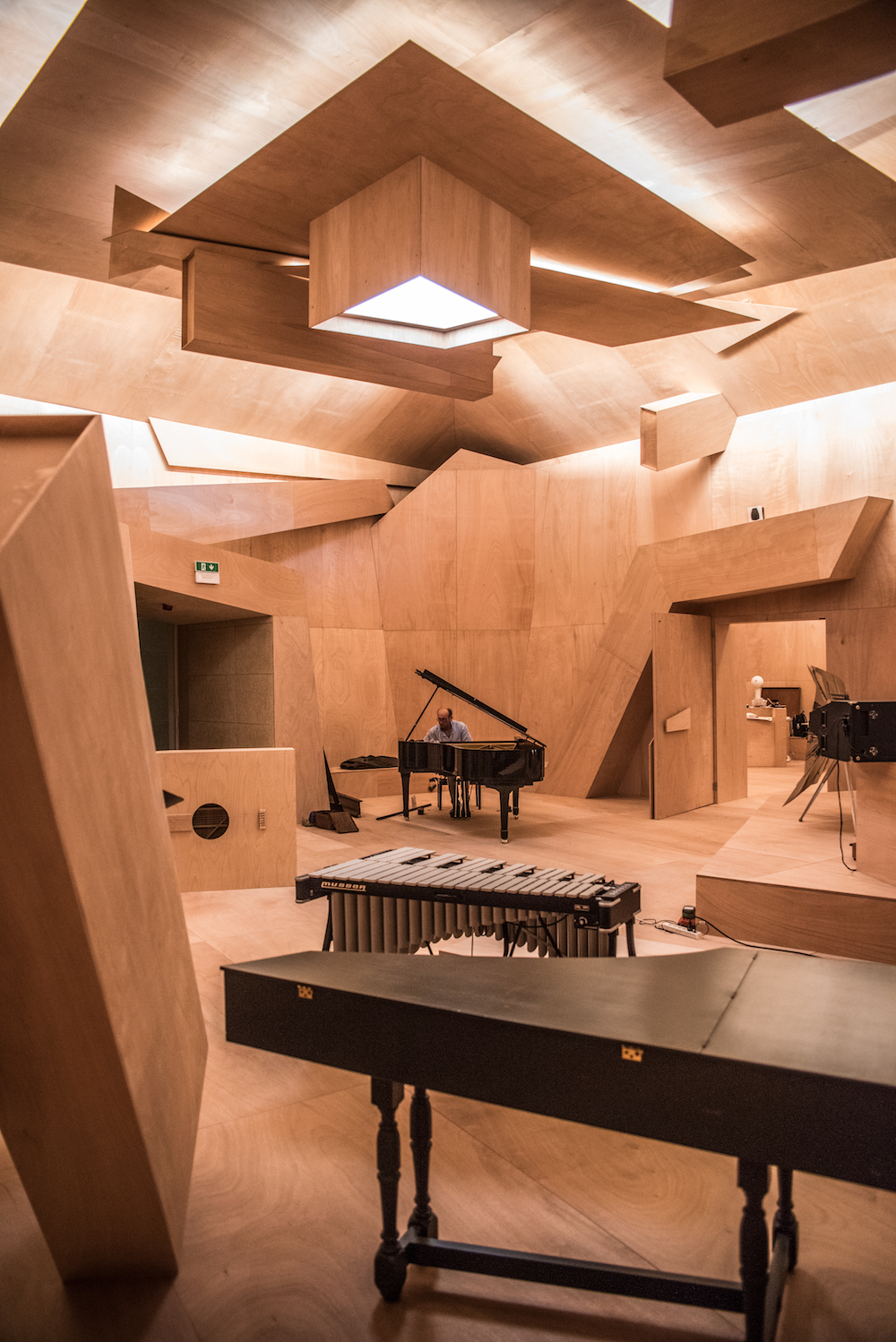
But, for me, the highlight of the biennale was the exhibition of Philip Guston and The Poets at the Galleries dell’Accademia that illustrates the relationship between the humanistic themes of writers including D. H. Lawrence and Wallace Stevens and the imagery and philosophical reflections of Guston. It is an exhibition that demands time. More time than I had.
After three footsore days, there was still much I hadn’t seen. But the queues were growing and my energy waning. I didn’t see the epic Hirst, for example, preferring to spend the final morning away from the razzmatazz of the biennale in the quiet of the stunning Galleria Giorgio Franchetti, with its spectacular mosaic floors covered with watery shadows from the sunlight outside and superb exhibition of rugs and carpets that are a reminder of Venice’s role as a crossroads between east and west.





